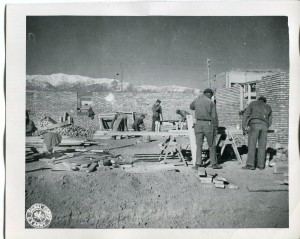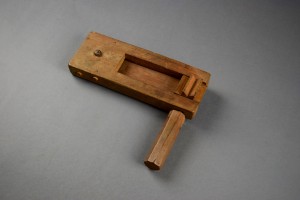By Ephriam D. Dickson III
Deputy Chief, Field Museums Branch, U.S. Army Center of Military History
Since the Army’s establishment, supply officers have struggled earnestly to find a functional design for Army footwear, one that could withstand the many varying environments into which Soldiers are often sent. “The health and efficiency of the soldier depends in a great measure on being able to keep his feet dry and sound,” noted General Callender Irvine as early as 1820. When injured by poor shoes, he argued, “their services are lost to the nation in a moment when they are most needed.”

The first footwear issued during the Revolutionary War were low quarter leather shoes, but, even with the addition of overlapping gaiters, rocks often slipped in and caused injuries. In 1821, higher laced “bootees,” rising four inches above the ankle, were introduced. Then in 1851, shoes were issued for the first time with distinct lefts and rights. Even with this slow evolution in design, the issued shoe had to serve all purposes for a Soldier, from dress parade to standing guard in the snow, and from long marches on campaign to evenings in the barracks.
During the 1880s, the Army reconsidered the design of enlisted footwear, and, for the first time, created specialized shoes for various uses. A post shoe was introduced for wear on garrison and two different designs for field shoes were intended for Soldiers marching on campaign. For cold or wet weather, rubber Arctic overshoes were added. The final addition to the new line of Army footwear was a shoe to be worn during leisure time in the barracks. In April 1886, the Secretary of War authorized the initial purchase of five thousand pairs of “barrack shoes” for trial.
Made of canvas with a leather toe covering and heel support, the barrack shoes were stylish for the period, lightweight and more comfortable. While intended for indoor wear only, the new shoes proved so popular that officers were soon reprimanding Soldiers for attempting to wear them in formation or during work about post. The design eventually gave way to the Army’s first gymnasium or gym shoe introduced in 1905.
The introduction of the humble barrack shoe is just one example of many improvements being made to Army clothing during this period, an indication of a larger trend. By the late nineteenth century, leaders recognized the importance of recruiting and keeping a committed professional enlisted corps. Over the next several decades, they made significant investments in training, post amenities, and improvements to the Soldier’s clothing – such as the barrack shoe – in an effort to keep quality personnel, signaling the beginning of a new era of professionalism for the U.S. Army.






